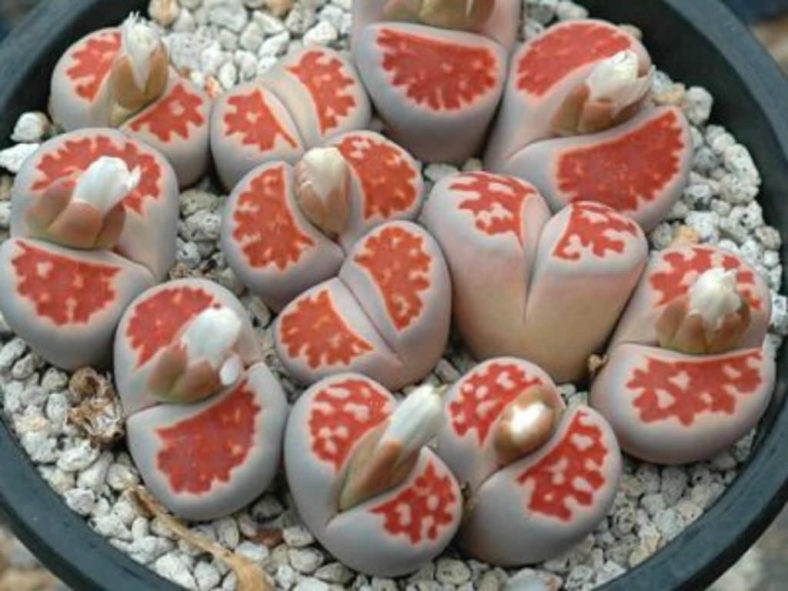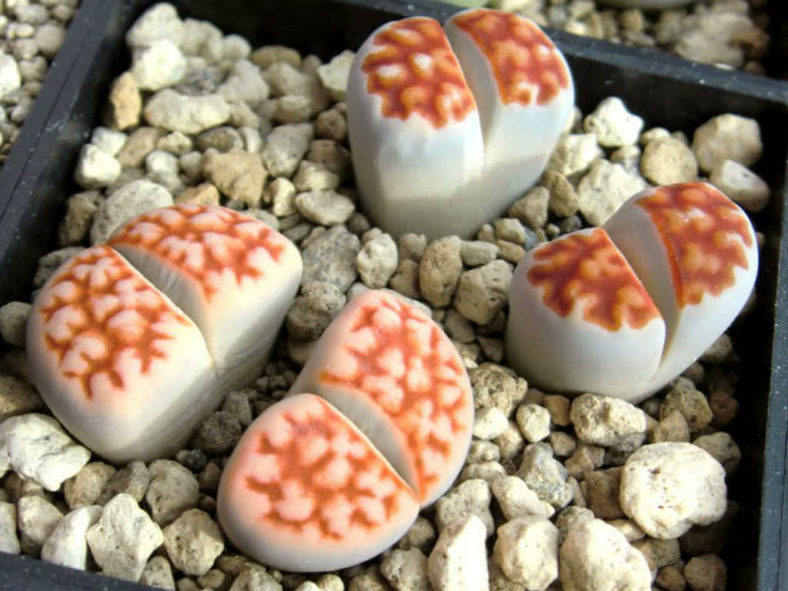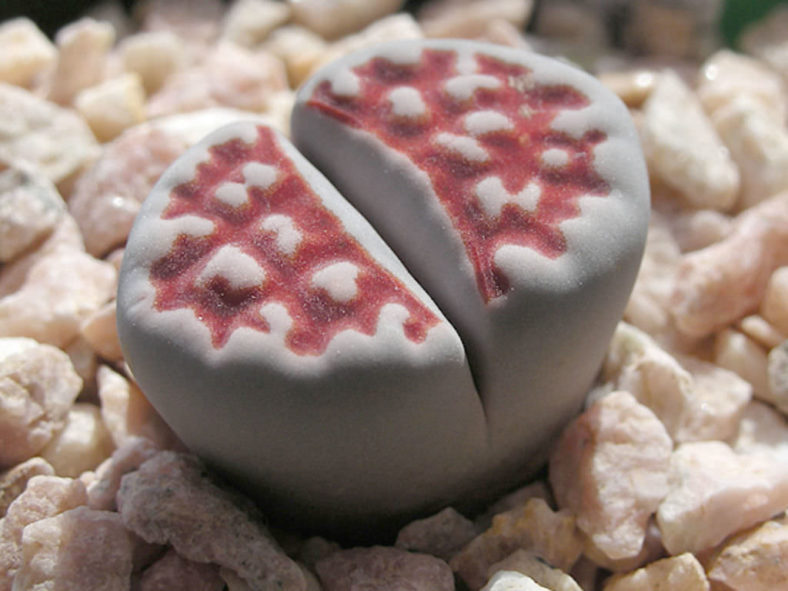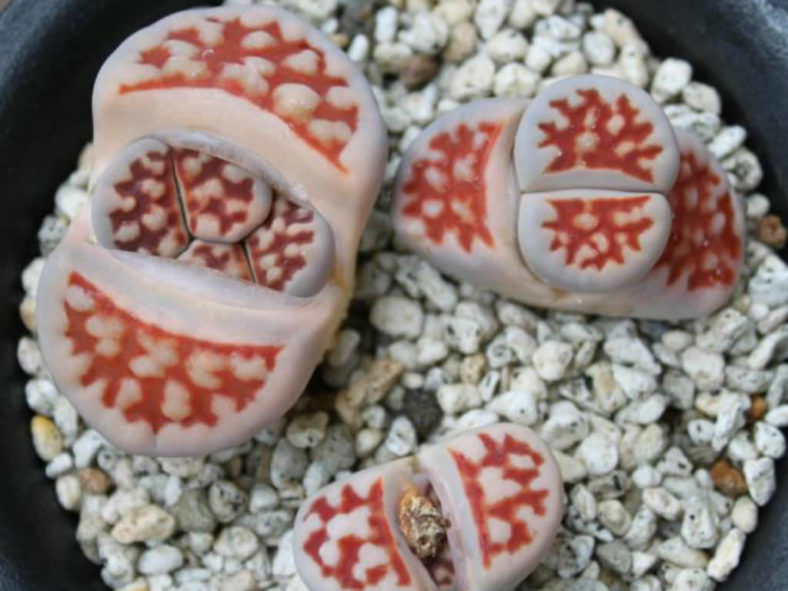Scientific Name
Lithops karasmontana 'Top Red'
Synonym(s)
Lithops karasmontana var. karasmontana 'Top Red'
Scientific Classification
Family: Aizoaceae
Subfamily: Ruschioideae
Tribe: Ruschieae
Genus: Lithops
Origin
Lithops karasmontana 'Top Red' is an atractive cultivar of Lithops karasmontana.
Description
Lithops karasmontana 'Top Red' is a dwarf succulent that forms clumps of pairs of thick, fleshy leaves fused in an inverted cone-shaped body with a central fissure dividing them. The leaves have red mottling on the upper surfaces. The bodies can grow up to 2 inches (4 cm) tall, spreading indefinitely. The face is kidney-shaped, flat to slightly convex, and can measure up to 1.4 inches (3.5 cm) long and 1.1 inches (2.8 cm) wide.
In fall, the solitary white flowers appear from the fissure between the leaves. They can reach up to 1.8 inches (4.5 cm) in diameter. The fruits are usually 5-chambered capsules with tiny yellow-brown seeds inside.

Hardiness
USDA hardiness zone 10a to 11b: from 30 °F (−1.1 °C) to 50 °F (+10 °C).
How to Grow and Care
Lithops develop a new set of leaves every year, with new leaves emerging in the fall and growing through the winter and summer. The plant will go dormant in late summer, and water should be severely restricted to prevent bursting leaves. The flowers appear near the end of summer or fall, first as a small bud forcing its way between the leaves, and growth will begin again. It's safe to water during this period. Heading into the winter, the leaves will still grow, but you should stop watering, even as the older leaves shrivel and encase the new growth. In the spring, it's safe to begin lightly watering again as the plants begin to grow again, heading toward their summer dormancy period and the emergence of new leaves in the fall.
Lithops are very slow-growing, small plants, making them ideal as houseplants (once you get the hang of their watering schedule). Older plants form attractive clumps of "pebbles" in their pots, which are highly prized. In general, plants should only be repotted if there are cultural problems (soggy soil) or the plant has outgrown its dish container, which will only happen every several years.
See more at How to Grow and Care for Lithops.
Links
- Back to genus Lithops
- Succupedia: Browse succulents by Scientific Name, Common Name, Genus, Family, USDA Hardiness Zone, Origin, or cacti by Genus
Photo Gallery
Click on a photo to see a larger version.


